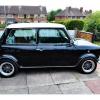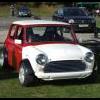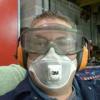Believable Bhp Or Not
#1

Posted 24 October 2012 - 04:43 PM
new manifold
k@n filter
stainless single side exhaust
would this reach 80bhp
possibly looking to buy so any help appreciated
#2

Posted 24 October 2012 - 05:06 PM
To get 80 bhp from a 1275GT engine requires a better cam & head, a better ex.manifold, a bigger carburettor on an alloy inlet manifold and a higher compression ratio.
#3

Posted 24 October 2012 - 05:07 PM
#4

Posted 24 October 2012 - 05:13 PM
No, that would give 60 bhp. Remember, the Cooper 'S' 1275 with twin SU's a decent head, a 510 cam, 3-branch ex. manifold, etc, only gave 75 bhp.
To get 80 bhp from a 1275GT engine requires a better cam & head, a better ex.manifold, a bigger carburettor on an alloy inlet manifold and a higher compression ratio.
You're obviously not as good as David Wizard who got that sort of power from a std 1275 in a CCC article.
#5

Posted 24 October 2012 - 05:25 PM
No, that would give 60 bhp. Remember, the Cooper 'S' 1275 with twin SU's a decent head, a 510 cam, 3-branch ex. manifold, etc, only gave 75 bhp.
To get 80 bhp from a 1275GT engine requires a better cam & head, a better ex.manifold, a bigger carburettor on an alloy inlet manifold and a higher compression ratio.
You're obviously not as good as David Wizard who got that sort of power from a std 1275 in a CCC article.
How did he get it from a standard 1275? Out of thin air?
He probably did it by improving the head, adding a good inlet manifold, a good exhaust system, modifying the carb and cam.
His name is Vizard by the way.
#6

Posted 24 October 2012 - 05:26 PM
BHP was measured at 84 bhp at 5900 rpm.
This was classed as a 'standard' engine
#7

Posted 24 October 2012 - 05:28 PM
#8

Posted 24 October 2012 - 05:37 PM
I stripped a 1990 1275 Cooper engine and 'blueprinted' it very carefully. I skimmed 0.027" off the head, removed the steps and ridges in the combustion chambers, took a bit off the valve guide bosses and smoothed out the short-side radius. The head had 35.6 mm inlets and 29.5 mm exhausts (MG Metro, which, incidentally, Haynes said was standard for a 1990 Cooper!), it had an MG Metro cam, the inlet manifold had the casting flash removed and the timing was by duplex chain with cam timing set very accurately. Ex. manifold was standard 1990 Cooper with a twin box RC40 system. Carb was 'flowed' HIF44. Air filter was an ITG with a stub stack. Dizzy was an Aldon one. Pistons were 21253.
BHP was measured at 84 bhp at 5900 rpm.
This was classed as a 'standard' engine
What do you mean it was classed as standard ?
#9

Posted 24 October 2012 - 06:19 PM
#10

Posted 24 October 2012 - 06:26 PM
#11

Posted 24 October 2012 - 06:30 PM
#12

Posted 24 October 2012 - 06:39 PM
Stock or standard means, exactly how it left the factory.
AC
Edited by ACDodd, 24 October 2012 - 07:15 PM.
#13

Posted 24 October 2012 - 06:45 PM
This one always makes me giggle, Standard is standard, ie how it left the factory. Blue printed depending on who has done it ranges from many different mods to leave parts to optimum factory specs (or whatever spec is required). The Vizard engine that is mentioned here is not standard. It used a flowed head, 40DCOE and offset rocker bushes. optimised exhaust etc. So no it was not standard. What it was (an still is) is a good example of the sort of bolt on mods required to release serious grunt from a stock engine. A stock 1275 gt engine in standard trim with all factory manifolds and exhaust fitted would probably give 57 to 60hp. Now fit a stage 1 kit, lap the valves in and dyno tune you would be looking at 65 to 67hp. A freshly rebuilt MG metro engine in stock trim and run in properly with a st1 kit is good for 72 to 75bhp @ Flywheel.
Stock or standard means, exactly how it left the factory.
AC
(cough....class 1 autograss mini engines!!)
#14

Posted 24 October 2012 - 06:49 PM
AC
#15

Posted 24 October 2012 - 06:51 PM
I stripped a 1990 1275 Cooper engine and 'blueprinted' it very carefully. I skimmed 0.027" off the head, removed the steps and ridges in the combustion chambers, took a bit off the valve guide bosses and smoothed out the short-side radius. The head had 35.6 mm inlets and 29.5 mm exhausts (MG Metro, which, incidentally, Haynes said was standard for a 1990 Cooper!), it had an MG Metro cam, the inlet manifold had the casting flash removed and the timing was by duplex chain with cam timing set very accurately. Ex. manifold was standard 1990 Cooper with a twin box RC40 system. Carb was 'flowed' HIF44. Air filter was an ITG with a stub stack. Dizzy was an Aldon one. Pistons were 21253.
BHP was measured at 84 bhp at 5900 rpm.
This was classed as a 'standard' engine
What do you mean it was classed as standard ?
I mean the scrutineers were happy with is as a 'standard' engine. In other words they would not have been able to identify where it was 'not standard'. Service manual says you can skim by 0.025" and 0.027" is within tolerance for head thickness/machining accuracy. Early 940 heads did not have the nasty steps around the valve seats which the later ones have, so they were removed. The short-side radius which was so bad on later heads was not so bad on early ones, so that was slightly re-shaped. No-one seems to know what cam was fitted to the 1990 - 1 Cooper, so I fitted an MG Metro one. The valves were stated in Haynes to be 35.6 mm inlets, so those I used (despite my belief that they were all 33.5 mm in the 1275 Cooper) as I had documentary evidence. The casting 'flash' was not shown on the original drawings, so it was removed to make the castings 'as drawn'. Cam was timed in as specified by Rover as it was about 5 degrees retarded when measured during trial build. Pistons were 21253 as original Rover ones were NLA. Also it was bored to 1330 cc as allowed by the regulations.
A 'blueprinted' engine is optimised to give best results using original manufacturer's drawn parts with tolerances at the best for the power. The old BMC 'works' Cooper 'S' race & rally engines were similarly treated.
Edited by Cooperman, 24 October 2012 - 06:53 PM.
2 user(s) are reading this topic
0 members, 2 guests, 0 anonymous users



















